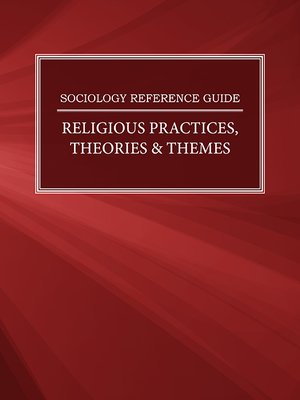Sociology Reference Guide: Religious Practices, Theories & Themes
ebook
By The Editors of Salem Press

Sign up to save your library
With an OverDrive account, you can save your favorite libraries for at-a-glance information about availability. Find out more about OverDrive accounts.
Find this title in Libby, the library reading app by OverDrive.



Search for a digital library with this title
Title found at these libraries:
| Library Name | Distance |
|---|---|
| Loading... |
The opening essay of the collection uses a global perspective to first define how belief systems are formed and then
compare the aspects of various world religions. The next essay continues to name the fundamentals of religion by way
of measuring “religiosity,” or the “intensity” of a community’s practice, the membership of religious organizations,
and the attendance of its services. Ruth A. Wienclaw and Jeremy Baker turn to the topics of “religious economy” and
the assortment of denominations and sects found in religion. According to the authors, “many religions are distinguished
internally by subdivisions that differ on issues of orthodoxy, theology, and practice.” In the United States, for
example, the religious landscape is dominated by several major faiths, but a diversity of belief systems flourish in the
margins. Carolyn Sprague’s essay on religion and industry charts the development of religious faith in predominantly
industrial societies. The final essay in this group looks at the subject of sexuality, which is a major topic in the sociology
of religion that cuts across all cultures. The essay studies the attitudes adopted by the major religions of the world
and compares the changing perspectives toward sexuality in modern Catholic, Jewish, and Islamic faiths.







